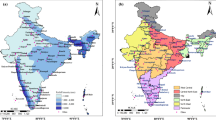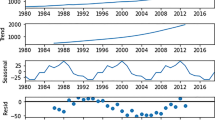Abstract
Taxi passenger demand prediction is of great significance to perceive citywide human mobility and make a lot of urban sensing applications more convenient. There are two major challenges to develop accurate predictive models, i.e., the complexity of the spatial-temporal dependencies as well as the dynamicity caused by some unpredictable dependencies. Although existing work uses various methods such as time series analysis, machine learning, and deep learning, most of them ignore two facts: the uncertainty of taxi demands and the impact of the parallel car-hailing markets (e.g., Uber demands) on taxi demands. In this paper, in order to deal with these two facts systematically, we design a unified framework that can use multi-source data to improve prediction accuracy. Specifically, we analyze the correlations between taxi and Uber demands and design two deep models, each of which containing a specific feature fusion method. The first model adaptively aggregates features of each grid according to the correlations. To realize the feature fusion among adjacent grids, the other method contains an additional local convolution. Besides, we also study the impact of Uber demand trends on taxi demands and aggregate the impact into the second model to improve prediction accuracy. We evaluate our models based on both taxi and Uber datasets collected from New York City, USA. Results show that our models achieve superior performance compared to the state of the art.










Similar content being viewed by others
Notes
We delicately differentiate the two kinds of passenger demands in this paper, i.e., taxi passenger demands and Uber-passenger demands. For simplicity, we just use taxi demands and Uber demands for short in the rest of the presentation.
References
Alajali W, Zhou W, Wen S (2018) Traffic flow prediction for road intersection safety. In: 2018 IEEE SmartWorld, ubiquitous intelligence & computing, advanced & trusted computing, scalable computing & communications, cloud & big data computing, internet of people and smart city innovation (SmartWorld/SCALCOM/UIC/ATC/CBDCom/IOP/SCI). IEEE, pp 812–820
Cai P, Wang Y, Lu G, Chen P, Ding C, Sun J (2016) A spatiotemporal correlative k-nearest neighbor model for short-term traffic multistep forecasting. Transp Res Part C: Emerg Technol 62:21–34
Chen C, Zhang D, Ma X, Guo B, Wang L, Wang Y, Sha EHM (2017) crowddeliver: planning city-wide package delivery paths leveraging the crowd of taxis. IEEE Trans Intell Transp Syst 18(6):1478–1496
Chen C, Ding Y, Wang Z, Zhao J, Guo B, Zhang D (2019) Vtracer: when online vehicle trajectory compression meets mobile edge computing. IEEE Syst. J. 14.2:1635–1646
Chen C, Ding Y, Xie X, Zhang S, Wang Z, Feng L (2020) Trajcompressor: an online map-matching-based trajectory compression framework leveraging vehicle heading direction and change. IEEE Trans Intell Transp Syst 21(5):2012–2028
Fan X, Xiang C, Chen C, Yang P, Gong L, Song X, Nanda P, He X (2020) Buildsensys: reusing building sensing data for traffic prediction with cross-domain learning. IEEE Trans Mob Comput: 1–1. https://doi.org/10.1109/TMC.2020.2976936
Geng X, Li Y, Wang L, Zhang L, Yang Q, Ye J, Liu Y (2019) Spatiotemporal multi-graph convolution network for ride-hailing demand forecasting. In: Proceedings of the AAAI conference on artificial intelligence, vol 33, pp 3656–3663
Guo S, Chen C, Wang J, Liu Y, Ke X, Yu Z, Zhang D, Chiu DM (2019) Rod-revenue: seeking strategies analysis and revenue prediction in ride-on-demand service using multi-source urban data. IEEE Trans Mob Comput: 1–1. https://doi.org/10.1109/TMC.2019.2921959
Kumar SV, Vanajakshi L (2015) Short-term traffic flow prediction using seasonal arima model with limited input data. Eur Transp Res Rev 7(3):21
Li M, Zhu L, Lin X (2019) Privacy-preserving traffic monitoring with false report filtering via fog-assisted vehicular crowdsensing. IEEE Trans Serv Comput. https://doi.org/10.1109/TSC.2019.2903060
Liang X, Wang G, Min MR, Qi Y, Han Z (2019) A deep spatio-temporal fuzzy neural network for passenger demand prediction. In: Proceedings of the 2019 SIAM international conference on data mining. SIAM, pp 100–108
Lin L, He Z, Peeta S (2018) Predicting station-level hourly demand in a large-scale bike-sharing network: a graph convolutional neural network approach. Transp Res Part C: Emerg Technol 97:258–276
Liu L, Zhen J, Li G, Zhan G, Lin L (2019) Acfm: a dynamic spatial-temporal network for traffic prediction. arXiv:190902902
Luo X, Niu L, Zhang S (2018) An algorithm for traffic flow prediction based on improved sarima and ga. KSCE J Civil Eng 22(10):4107–4115
Ma X, Dai Z, He Z, Ma J, Wang Y, Wang Y (2017) Learning traffic as images: a deep convolutional neural network for large-scale transportation network speed prediction. Sensors 17(4):818
Moreira-Matias L, Gama J, Ferreira M, Mendes-Moreira J, Damas L (2013) Predicting taxi–passenger demand using streaming data. IEEE Trans Intell Transp Syst 14(3):1393–1402
Najafabadi S, Allahviranloo M (2016) Inference of pattern variation of taxi ridership using deep learning methods: a case study of New York City. In: International conference on transportation and development 2018: planning, sustainability, and infrastructure systems (pp 71–81)
Ojeda LL, Kibangou AY, De Wit CC (2013) Adaptive Kalman filtering for multi-step ahead traffic flow prediction. In: 2013 American control conference. IEEE, pp 4724–4729
Qian X, Ukkusuri SV (2015) Spatial variation of the urban taxi ridership using gps data. Appl Geogr 59:31–42
Singh V, Chander D, Chhaparia U, Raman B (2018) Safestreet: an automated road anomaly detection and early-warning system using mobile crowdsensing. In: 2018 10th international conference on communication systems & networks (COMSNETS). IEEE, pp 549–552
Varona B, Monteserin A, Teyseyre A (2019) A deep learning approach to automatic road surface monitoring and pothole detection. Pers Ubiquitous Comput: 1–16
Xu J, Rahmatizadeh R, Bölöni L, Turgut D (2017) Real-time prediction of taxi demand using recurrent neural networks. IEEE Trans Intell Transp Syst 19(8):2572–2581
Yao H, Wu F, Ke J, Tang X, Jia Y, Lu S, Gong P, Ye J, Li Z (2018) Deep multi-view spatial-temporal network for taxi demand prediction. In: Thirty-second AAAI conference on artificial intelligence
Yu R, Li Y, Shahabi C, Demiryurek U, Liu Y (2017) Deep learning: a generic approach for extreme condition traffic forecasting. In: Proceedings of the 2017 SIAM international conference on data mining. SIAM, pp 777–785
Zhang J, Zheng Y, Qi D (2017) Deep spatio-temporal residual networks for citywide crowd flows prediction. In: Thirty-first AAAI conference on artificial intelligence
Zhang K, Liu Z, Zheng L (2019) Short-term prediction of passenger demand in multi-zone level: temporal convolutional neural network with multi-task learning. In: IEEE transactions on intelligent transportation systems
Zhao Z, Chen W, Wu X, Chen PC, Liu J (2017) Lstm network: a deep learning approach for short-term traffic forecast. IET Intell Transp Syst 11(2):68–75
Zhao L, Song Y, Zhang C, Liu Y, Wang P, Lin T, Deng M, Li H (2019) T-gcn: a temporal graph convolutional network for traffic prediction. In: IEEE transactions on intelligent transportation systems
Zhu Z, Peng B, Xiong C, Zhang L (2016) Short-term traffic flow prediction with linear conditional gaussian bayesian network. J Adv Transp 50(6):1111–1123
Zhu W, Guo W, Yu Z, Xiong H (2018) Multitask allocation to heterogeneous participants in mobile crowd sensing. In: Wireless communications and mobile computing, p 2018
Zonoozi A, Kim JJ, Li XL, Cong G (2018) Periodic-crn: a convolutional recurrent model for crowd density prediction with recurring periodic patterns. In: IJCAI, pp 3732–3738
Acknowledgements
Jie Zhao and Chao Chen contributed equally to this work. The work was supported by the National Natural Science Foundation of China (No. 61872050), the Chongqing Basic and Frontier Research Program (No. cstc2018jcyjAX0551), and the Fundamental Research Funds for the Central Universities (No. 21619310). Chao Chen is the corresponding author for this paper.
Author information
Authors and Affiliations
Corresponding authors
Additional information
Publisher’s note
Springer Nature remains neutral with regard to jurisdictional claims in published maps and institutional affiliations.
Rights and permissions
About this article
Cite this article
Zhao, J., Chen, C., Huang, H. et al. Unifying Uber and taxi data via deep models for taxi passenger demand prediction. Pers Ubiquit Comput 27, 523–535 (2023). https://doi.org/10.1007/s00779-020-01426-y
Received:
Accepted:
Published:
Issue Date:
DOI: https://doi.org/10.1007/s00779-020-01426-y




